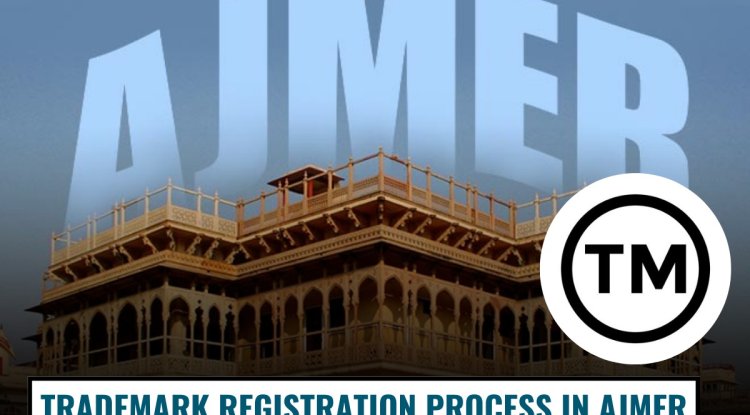TRADEMARK RENEWAL IN INDIA
This article focuses on providing in depth information about the process of trademark renewal as per the laws of India. It firstly explains what trademark is and why is it important to register your trademark. Then it specifies the exact process, requirements and technicalities including document requirements for renewing trademark registration within India.

Introduction
Trademarks as we know today, is a kind of intellectual property which has subsisted since ancient times. Back in the day, when trade flourished between India and Iran, the Indian craftsmen inscribed their signature on their arty creations. This signifies the level of understanding and knowledge people had back then, even without modern education and technology, they understood importance of protecting one’s intellectual property. In today’s world, the field of intellectual property is growing more than ever, especially the market of trademarks, with more people realizing is importance and benefits in terms of commercial activities and increased competition.
Typically, a trademark consists of designs, words, phrases, letters, slogans, numerals, symbols, sounds, 3D marks, combination of colours, device, etc., for instance, Ford is named after Henry Ford. Moreover, generic terms such as pen, cupcake, fan and software cannot be trademarked because such terms are used to identify the type of good or service, meaning they are not exclusive in nature. Contrary to this, there are certain names which are generic but still have been granted trademark protection, and one such brand is ‘Apple’. The reason behind granting such protection is that it has been granted under the classification of software technology and not foods which the term is generally related to and such marks are known as arbitrary or fanciful marks.
There are two symbols, namely; ™ which means Temporary Mark and ® which means Registered Trademark.
Trademarks in India are governed by the Trademarks Act, 1999, which provides for various provisions that safeguard “the trademark holder’s rights, confers rights in case of any infringement, modes to transfer the rights, etc.” In addition, it also seeks to provide for the registration of trademarks relating to goods and services in India. These are required to be renewed every 10 years, in case a trademark is not in use for 5 years continuously, it will expire. Interestingly, well-known brands or businesses such as TATA need not register their trademarks, as they are already protected under all the 45 classes as well-known trademarks in India and under the Paris Convention, TRIPS Agreement around the world. Other benefits of trademark registration include, exclusive identity, easy renewal, economical and a business asset.
Need for Trademark Registration
Registration confers the legal owner a right to protect their marks from being copied or used by any other person for commercial purposes.
-
Legal Protection: When a trademark is registered under the applicable law, i.e., Trademarks Act, 1999 it is legally protected, meaning the owner of the mark has the right to sue any person or organization for infringement, if they are using the registered mark without prior permission.
-
Identification: It helps in easily identifying and distinguishing your goods and services from that of the competitors, by providing unique brand identification. Registration ensures that competitors and fraudsters do not use your mark for commercial or fraudulent purposes.
-
Intangible Asset: Registered trademarks are intangible assets of the business and help increase profits in the long term. These can be transferred, sold or franchised, thus helping with expansion of business.
-
Goodwill: Registration of the brand name or logo help in recognition and marketing of the brand, thus creating goodwill and trust among the consumers. Goodwill being one of the most important business assets, helps with exponential growth and valuation of the business.
-
Global: In this fast-paced world, tech-savvy and social media driven world, goods and services are not restricted by boundaries. This signifies the need for protection internationally too. The Madrid System is one such system which provides for universal trademark protection.
-
Communication Tool: Trademarks have the ability to overcome cultural and language barriers and easily communicate with the masses. Such marks help consumers relate to the brand and differentiate it from the competitors.
-
Licensing: Licensing a trademark refers to permitting a third party to use your trademark for the specified purpose(s) without transfer of ownership and only registered trademarks are eligible to be licensed. Licensing a trademark encompasses various benefits including, expansion of business, increased brand recognition and other monetary advantages.
Trademark Renewal
What is meant by Trademark Renewal and why is it necessary to renew trademarks once registered?
As per Section 25 of the Trademarks Act, 1999, trademarks have to renewed every 10 years once registered. The trademark holder has to file a renewal application one year prior to the date of expiry of the registered trademark, as mentioned under Rule 57 and Rule 58 of the Trademark Rules, 2017.
1-3 months prior the registration of the trademark is set to expire the Office of the Trademark Registrar sends out a notice to the holder, informing him about the said renewal. In case, the holder fails to renew the trademark before it expires, the registrar has the authority to eliminate the trademark from the register. However, there is still an opportunity to get the trademark renewed within the next six months from the date of expiry, although additional charges would be levied for late filing. After completion of the 6-month period, an advertisement is issued in the Trademark Journal indicating the removal of the trademark.
Renewal of trademarks is crucial to both the brand and business, otherwise the trademark holder would lose all the rights conferred upon him by law and other benefits attached.
Documents Required for Renewal Process
A copy of the following documents is to be submitted along with the applicational for renewal.
-
Trademark Registration Certificate
-
Form TM-A
-
PAN Card or any other Identity Proof
-
Address Proof
-
Power of Attorney (In case someone else is filing on your behalf)
Renewal Process
The process for renewing a trademark is quite simple and can be of kinds, one wherein the mark is renewed without any changes and the other being wherein the mark is renewed with certain changes.The process if as follows:
-
To begin with, a renewal application has to be filed under form TM-R.The application may be filed either by the holder of the mark or by any authorized person.
-
An affidavitand form TM-18 have to be attached along with the application, in support of the claims or statement made in the application.
-
Subsequent to the filing of the application, it will be scrutinized and the status of the same has to be followed in order to look out for any opposition.
-
Once approved, a certificate of renewal is issued and the trademark is published in the Trademark Journal, thus granting the holder protection for the next 10 years. A trademark can be renewed infinite number of times.
-
The renewal fee depends upon the mode of renewal, i.e., if it’s done online the fee is Rs. 9,000/- and if it’s done offline, thefee is Rs 10,000/-.
Restoration of a Trademark
At times, one might forget about such renewal during the specified time period. In such cases, Section 25(3) of the Trademark Act, 1999, provides for restoration of a trademark. Such restoration can be done with a year’s time from the expiry of the markand has to be filed under Form TM-13. Once, the application is sent the same process of scrutiny, opposition (if any) and publication will be followed. After all the boxes are checked, the mark is restored for the next 10 years.
Judicial Pronouncements
-
Union of India v. Malhotra Book Depot [MIPR 2013 (1) 246]
In this case, no notice was served to the respondentsin Form O-3 and despite of such non-issuance the Registry had eliminated the mark from the Trademark Register. The court held that, “a mark cannot be removed without following the due process as per the provisions of law and in this case, it had been done without following the due process and had made presumptive statements. Additionally, the Form O-3 had not been issued as provided for under Rule 67. Therefore, such removal without due procedure will itself be laconic and illegal.”
-
Sarla Goel v. Kishan Chand [(2009) 7 SCC 658]
The Apex Court, in this particular judgement accentuated upon the importance of abiding by the prescribedlegislative procedure, step by step and held that “an earlier step to be a precondition for the next step and it being impermissible to straightway jump to the last step. It was further held that the last step can come only after step has been taken.”
References
BY SALONI SANCHETI












